Continuing on our journey of Jersey City neighborhoods, let’s visit The Heights!
I sat down with Roger Heitmann, Treasurer for the Riverview Neighborhood Association who was born in the Heights and has lived here for most of his life. His family lineage in the Heights goes back to 1891 and he’s a bit of a history buff with a penchant for old houses.
Where is The Heights?
Sitting atop the Palisades and looking down on Hoboken, the boundaries are Paterson Plank Road to the north; the City of Hoboken to the east and Highway 139 to the south. The west boundary depends on who you ask; some consider it to be Routes 1 & 9 and some say it stretches over as far as the Hackensack River.
Historical Highlights:
Settled by the Dutch in the 1600s, The Heights didn’t actually belong to Jersey City until 1869. It was an independent municipality called Hudson City, settled with the help of Dutch West India Company agent Cornelius Van Vorst; the patriarch of a family who really left their mark all over Jersey City.
“In those days the Dutch were very farm-oriented people. They thought they’d grow crops over here, but they found that once they started digging, a foot or two down was solid rock. It wasn’t very conducive to their original plans so they ended up planting a lot of apple and peach orchards,” said Roger. “The Heights was a very bucolic area at that time.”
Some of the first homes in the area can be dated back to the 1700s and in 1760, what is now referred to as the Ogden Conrad house; named after two of its former residents; New Jersey Governor of 1812 Aaron Ogden and Theodore Conrad, a neighborhood activist and architectural preservationist in the 1960s and 1970s, was erected.
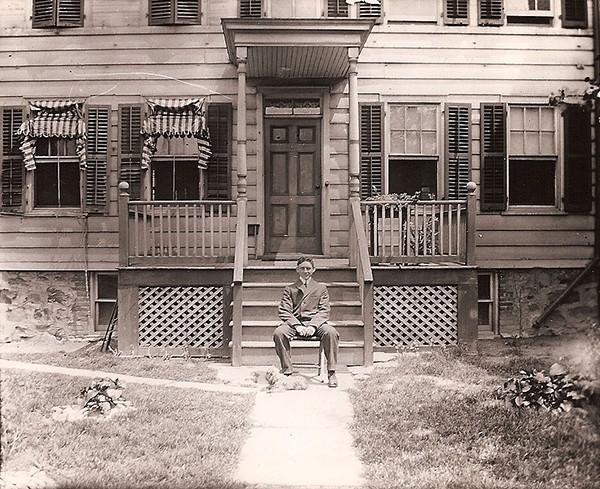
In 1852, the Heights was incorporated as a town and then into a city in 1855.
By the 1850s, the Heights’ main thoroughfares were filled with businesses and the neighborhood became home to a large German immigrant population. “The primary language in the Heights was German, they even taught it in the public schools,” explained Roger.
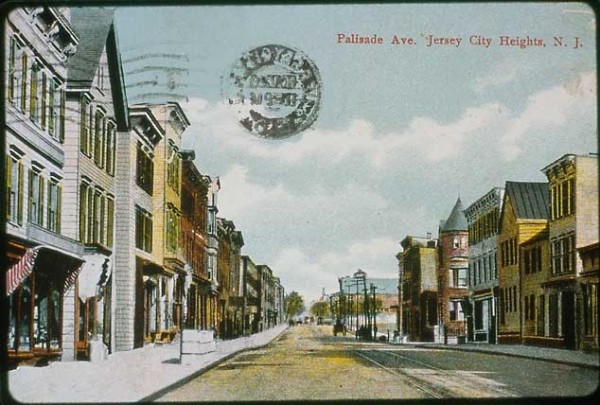
In 1874 Pohlmann’s Hall, a three-story German social and athletic club at 154 Ogden Avenue opened to neighborhood residents. It was restored in the 1980s when it was turned into condos.
In addition to the “100 steps,” pedestrians could shortcut from the Heights to Hoboken, a steam-operated elevator used to carry passengers, horse carriages, and wagons also opened in 1874 next to the trolley stop on Ogden Avenue. It was later upgraded to electricity in 1892.
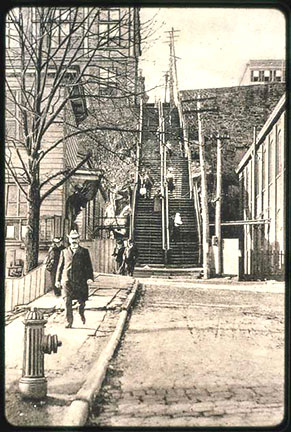
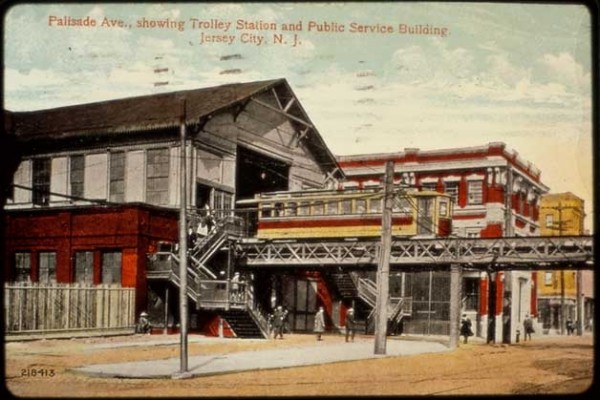
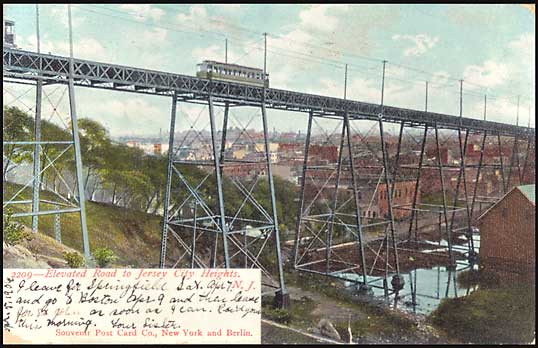
Pathé, which in 1910 was the largest film and production company for silent movies in the world, set up their factory in the Heights and in 1914 produced The Perils of Pauline, a 20 episode series that was partially filmed in the neighborhood.
It is said that the term “cliffhanger” came from this series, due to a number of episodes that featured Pauline (the cliché damsel in distress) hanging from the Palisades cliffs, facing her seemingly imminent death.
Among the many businesses in town, in 1911, Fleckenstein and Sons, whose factory was located on the corner of Hancock Avenue and Griffith Street, was the largest producer of bologna in the country.
Between 1914 -1941, the Krause Diamond Shop stood at 250 Ogden Avenue and was run by Fritz Krause and his wife, a former ballet dancer who smuggled a million dollars’ worth of industrial diamonds in her hat on her journey over from Germany during World War I.


Landmarks:
Van Vorst House
531 Palisade Avenue
The Van Vorst family had several homes around Jersey City but what stands on Palisade Avenue today was built in 1740 and is the oldest house in Jersey City. It is currently privately owned.

Revolutionary War officers are said to have stayed at this house, chosen because the Heights’ high ground was especially useful for keeping an eye on what was going on in Manhattan. “The Heights served as a perfect viewpoint for Washington and his men to keep an eye on British troops,” said Roger.
Reservoir # 3
Corner of Summit and Reservoir Avenues
Built between 1871 and 1874 as part of the city’s waterworks system, this reservoir provided the city’s drinking water until the 1980s when it was abandoned for a larger basin. Since then, the reservoir has become home to a mini ecosystem of plants and wildlife and is now as an active community fishing and kayaking locale.
Leonard J. Gordan Park (aka “Mosquito Park”)
Corner of Manhattan Avenue
Established in 1907 and named after Dr. Leonard J. Gordon; a New York native, Union soldier in the Civil War, chemist, and medical practitioner, Gordon was most known around the community for championing the founding of the Free Public Library of Jersey City (that’s his bust just inside the library doors).
The park’s most infamous residents, Buffalo and Bears were created by Utah-born sculptor Solon Borglum whose work focused on frontier life, cowboys and Native Americans. He is also responsible for the Soldiers and Sailors Victory Monument in front of City Hall and the sculpting gene ran in his family; his brother and nephew were the primary creators and carvers of Mount Rushmore.
Riverview-Fisk Park
1 Bowers Street
Donated by the Ogden family to Jersey City in 1899 for $1, this park is a panoramic of New York City and the Hudson River. This is Roger’s favorite spot in the Heights, he says, “You have such a great view from that park. In 1976, when I first moved back to the Heights, you could actually see the big ships coming up the Hudson. To me, Riverview is one of the premiere parks in the city.”
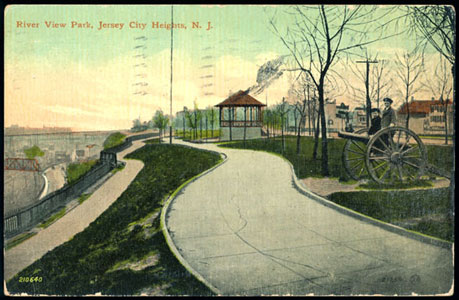
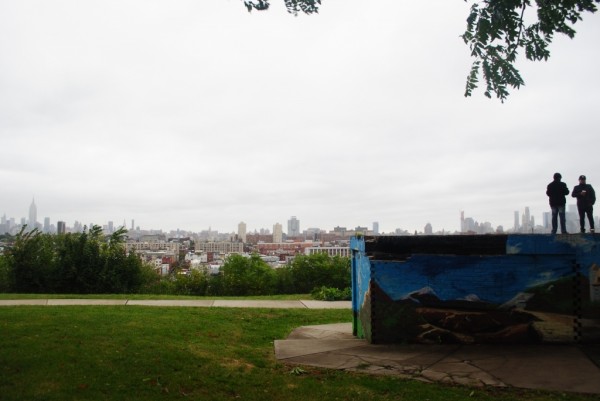
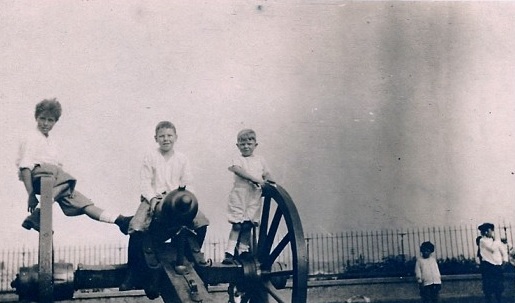
Don’t mistake that Victorian-looking bust in the park for Shakespeare; it’s actually of Henry Hudson, who sailed down the river that now carries his namesake back in 1609.
Architectural details:
Because the Heights wasn’t originally arranged on a grid of tightly quartered row houses like downtown Jersey City, the age of homes next door to one another vary significantly because they were built on large plots of land and later filled in as the population increased. But a stroll down Summit Avenue and Sherman Place reveals some of the most beautifully restored Victorian and Edwardian mansions in the city.
“For me, the key to identifying when a building was constructed are the windows,” said Roger. “If they’re original, you can identify a colonial house by its typical six-pane small window and a lot of times the original glass is not clear, it’s foggy. A Victorian period house can be distinguished by its brackets, ornamentation, unique shape, stained glass or lead framing.”
The Building Act of 1894 ruled that windows no longer had to lay flush with the exterior so the Edwardian Era took advantage of this design feature and utilized double bay or bowed windows often.
For more information about the Riverview Neighborhood Association visit http://riverviewneighborhood.org. They’re hard at work building community awareness, encouraging artistic endeavors around the neighborhood and stewarding Riverview Park.
Check out this amazing gallery of photos from The Heights!
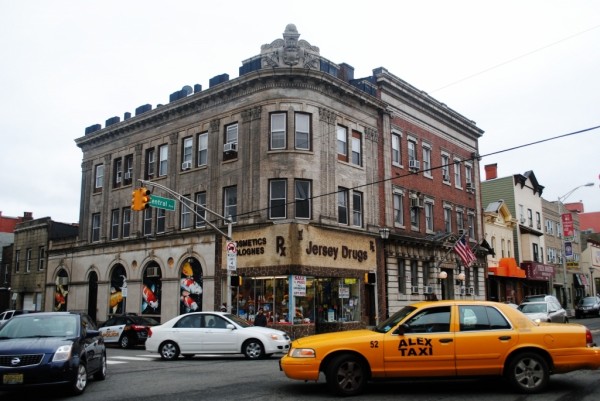
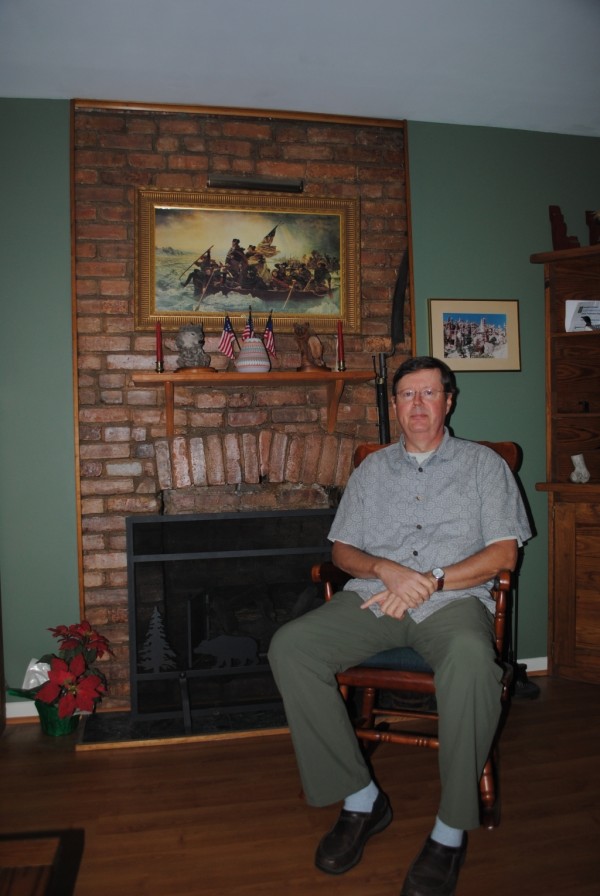
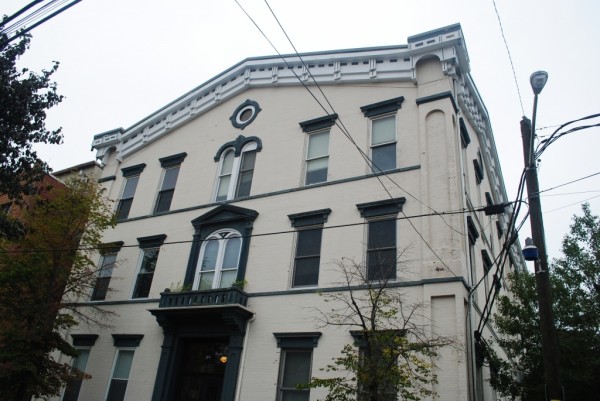
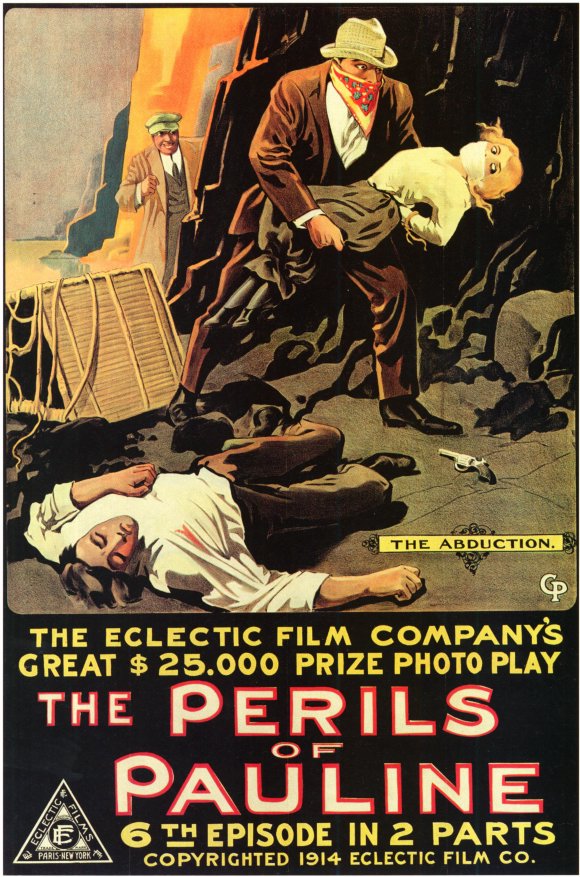
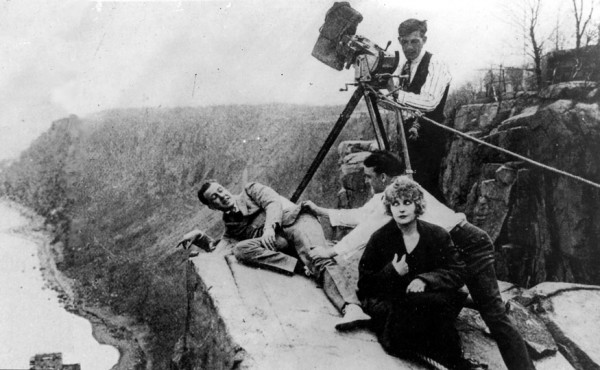
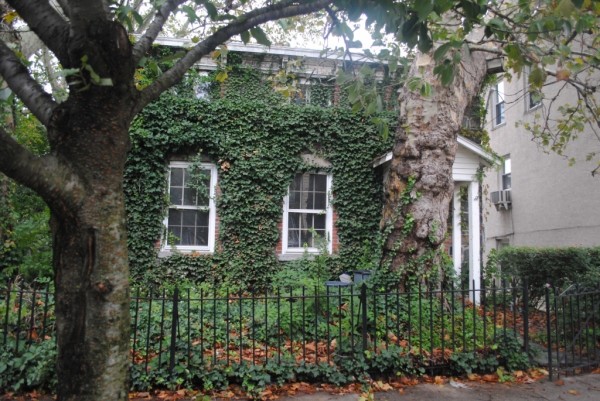
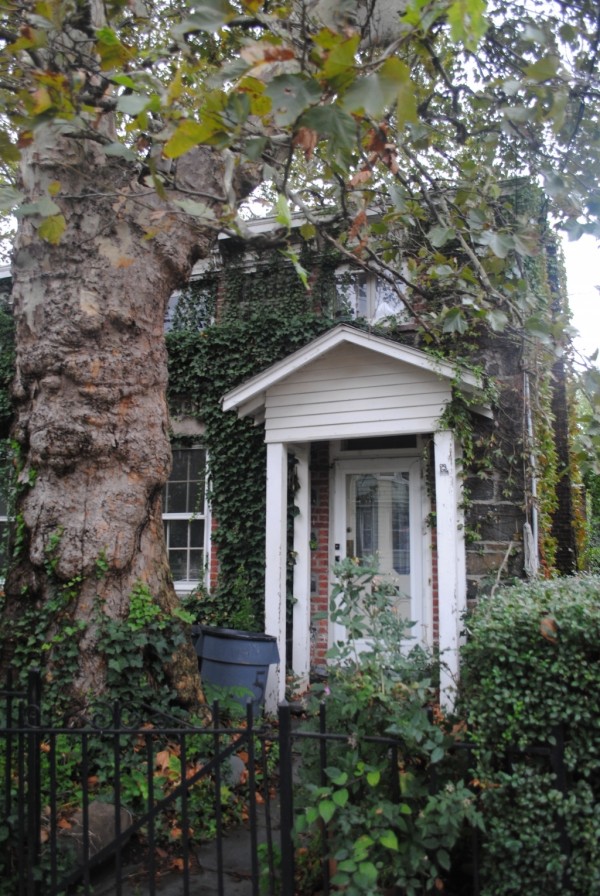
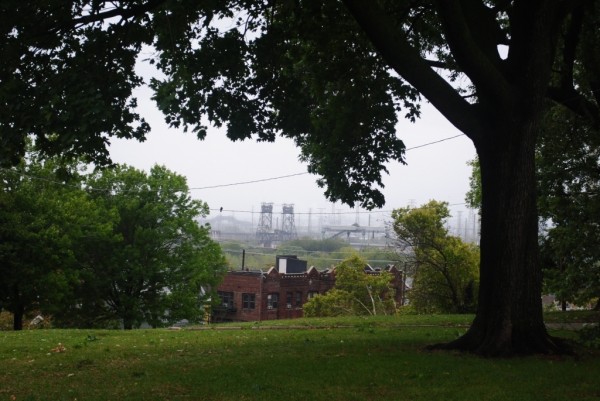

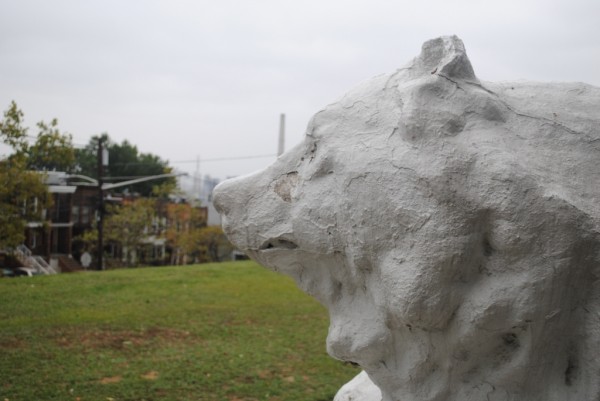

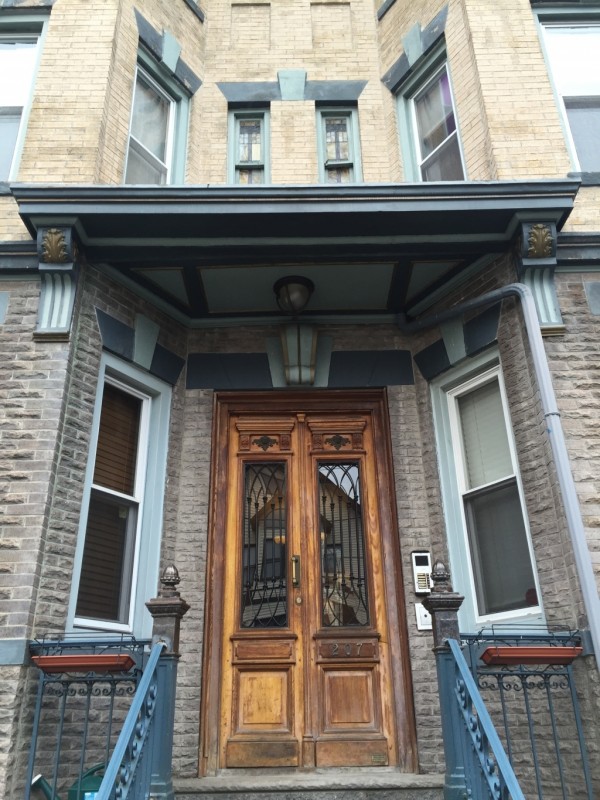
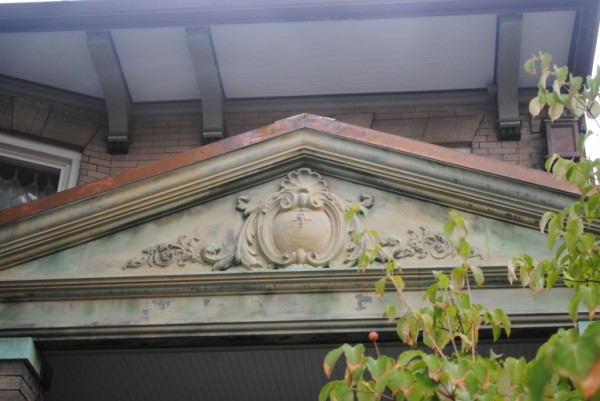
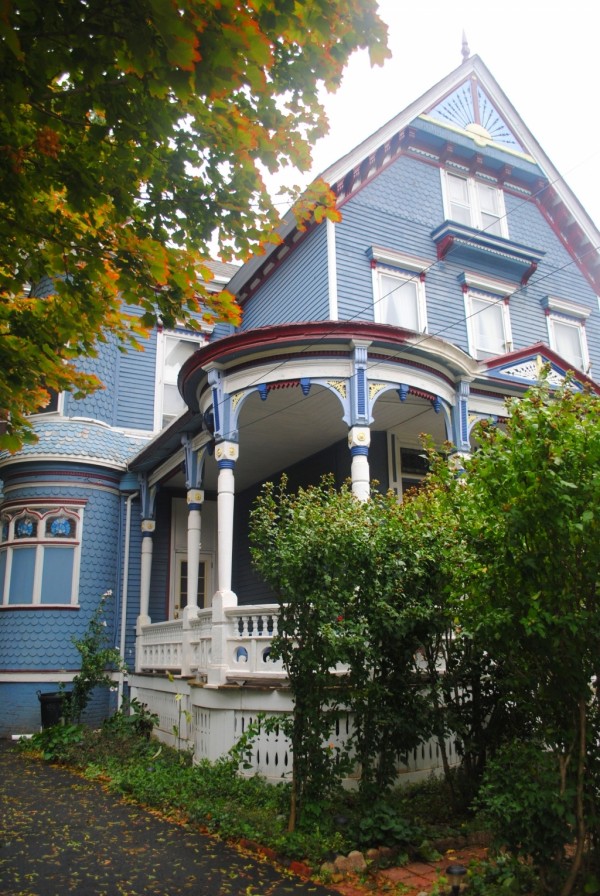
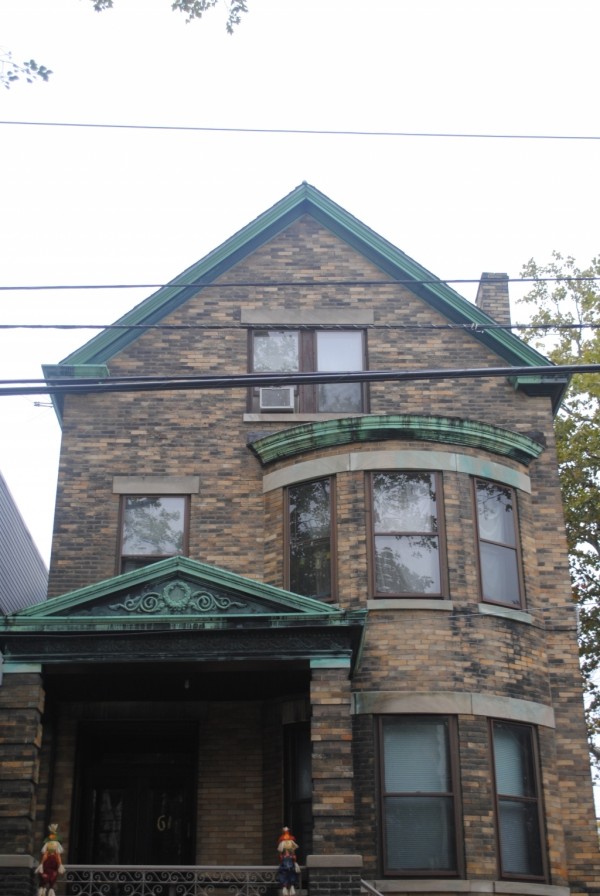























































what a great read!! thanks for sharing! I’m always trying to learn more about the heights… everytime I go up there I fall more in love :)
Thanks Jenn! So glad you enjoyed, more neighborhoods to come!
Excellent! Should have walked with you! Very interesting!
Hi! My name is felicia I live in York pa. My mother was from jersey city nj . When I was little we used to go up and see my great aunt who lived at 308 palisade ave now her building is changed I remember the gray shingles and brown trim the staircases were stained wood with a smell that I cannot explain but when I smell it I get home sick for jersey. There is a house in Baltimore md on charles st Mr vernon I walked passed when I lived there and they had the same smell. Her building was nice. It had brown heavy doors and the buzzards and mail boxes would be in side. Now all changed and they painted inside all white. For me it is disturbing. The only building in that block that is original is 300 palisade ave. And only pray they do not change it. And my all time favorite bridge is the Pulaski skyway love the color and the grates. My great aunt has a scrap book of old jersey. If you would like I can share more let me know! Does anyone remember joseph Olivetti he was commissioner of west ny he is no long been deceased but would like to find his sister she used to live at 135 new york ave. And used to watch me. I’m glad you have this site. But jersey is to modern don’t like. And rent is to high
Hi…great article- enjoyed the history and all the photos. One correction though- the street with the Edwardian homes is Sherman Place. Summit Ave and Sherman Place. There is also a Sherman Ave in the Heights but that is not where you will find the homes in your photos.
I was born and raised in “The Heights!” From the day I was born until the early 1970s’ I lived on Hague Street between Summit Avenue and Kennedy Boulevard. Heck, I’m old enough to remember when it was Hudson Boulevard! Although I haven’t lived in Jersey City, or anywhere on the East Coast in so many years I will always think of myself as a true “Jersey Boy!”, and will always take pride in the fact that I was born and raised in “The Heights!”
Thank you Lauren for such writing such a wonderful article about my old neighborhood and for bringing back so many old and cherished memories to me.
Thank you so much, Tom! I’m so glad to hear that it brought back memories for you.
Ah, thank you for reading and catching that, Sherry! It’s been corrected.
My mom went to St Nicholas grammer school on Ferry Street in the early 1900’s. They only taught in German. My mom was born here, but my grandmother came from Germany, and it was spoken in the house.
I lived in JC on the Westside from 61-71,to me the Heights was like living in the country,compared to where I lived.
Wow! Thanks for sharing your memories with us, Lois!
It’s funny how neighborhoods change over time, isn’t it? Thanks for reading John!
I grew up on South Street in the Heights. We found evidence that our home was the original “YWCA” in Jersey City.
Wow! What was the evidence?
The first 5 years of my life was spent at 559 Liberty Avenue which I believe is in the Heights. Family owned the property since the early 1900’s. Found your picture collection fun to view. Most old family pictures are of St. Ann’s and the backyard.
My grandparents and parents lived at 162 Congress St next to the church. Passaic Ave ended in our garage. The house was once the owners house of a large factory that once was behind it. The house to the west of ours was once a horse stable. The trolley car from Passaic would pass by on the way to Hoboken. My father knew the Fleckensteins and their meat market. Mrs Fleckenstein only took care of money, while her husband was the Butcher. There is a Stain glass window in my home church St Anne’s on Congress St. with their name on it. Doctor Imhoff from Summit Avenue, a parishioner of St Nicks church, married into the Fleckenstein family. Tragedy struck when she started down the hill towards 1&9 by Narrowbacks pub and her breaks on the brand new car failed and she was killed.
The store on the corner of Poplar Street and Summit and the one at the corner of Congress St and Central Ave were owned by the family Zendt who were immigrants from Wössingen Germany which is 90 mins south of Frankfurt.
Very enjoyable read! Brings back many happy memories. Thank you for publishing
This is a great history of the Jersey City Heights. I was born in Christ Hospital in 1944.
I lived at 206 Ogden Ave for 11 years then moving to Middlesex County, NJ. The serpentine road to Hoboken was around the corner. The Whitewall and the 100 Steps, etc.. I remember playing games in the street. Such as Stick Ball, Kick the Can, Buck- Buck, roller skating and can you believe Football. I remember building Orange crates scooters and building club houses behind the hill. I was recently returning from a business meeting in Manhattan via the Lincoln Tunnel. I decide to take Willow Ave to Hoboken. When I approached Mountain Road my memory kicked in. I turned and traveled up the road to Ogden Ave, which is now a one- way heading south as opposed to what it was when I lived there. I could talk about my life in Jersey City for hours. I am grateful for living and being raised in Jersey City. I love to go back to see the old stomping grounds. There will always be a warm spot in my heart for Jersey City.
Loved reading this history and seeing all the photos!